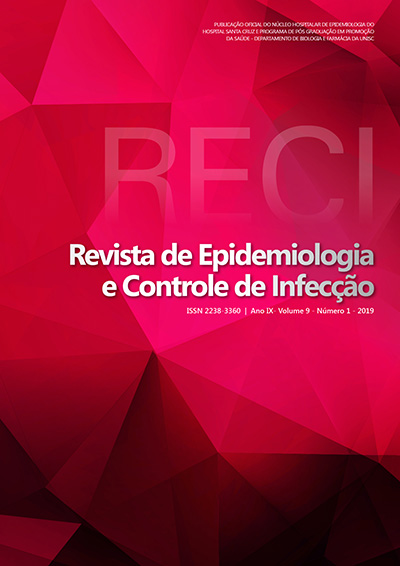Prevalence of leprosy, degree II of physical incapacity and proportion of multibacillary cases: A paradox that evidences late diagnosis and hidden prevalence?
DOI:
https://doi.org/10.17058/reci.v9i1.11765Abstract
In recent decades the number of leprosy cases has significantly decreased worldwide. Nevertheless, this reduction has been questioned by many researchers, who believe there are much more patients. This work aimed to analyze the temporal evolution of three epidemiological indicators prevalence ratio, physical disability grade II ratio and proportion of multibacillary cases) in order to find evidence of late diagnosis and hidden prevalence of leprosy in the state of Bahia. The regression model by joinpoint was used to evaluate the trend of the indicators in the period from 2001 to 2015. A statistically significant trend of reduction in prevalence was observed (AAPC -5,5%; p<0,001) followed by an increse in grade II ratio (AAPC 2,7%; p<0,001) and the proportion of multibacillary cases (AAPC 2,2%; p<0,001). This paradox suggests the existence of late diagnosis and hidden prevalence in the state.Downloads
Downloads
Published
How to Cite
Issue
Section
License
The author must state that the paper is original (has not been published previously), not infringing any copyright or other ownership right involving third parties. Once the paper is submitted, the Journal reserves the right to make normative changes, such as spelling and grammar, in order to maintain the language standard, but respecting the author’s style. The published papers become ownership of RECI, considering that all the opinions expressed by the authors are their responsibility. Because we are an open access journal, we allow free use of articles in educational and scientific applications provided the source is cited under the Creative Commons CC-BY license.


